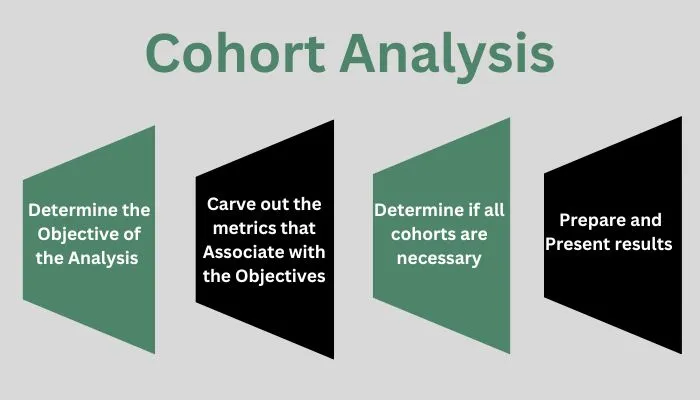
In the vast and ever-evolving landscape of digital marketing, understanding your audience is paramount. Marketers constantly strive to decode the preferences, behaviors, and trends of different segments of their audience. This is where cohort analysis, a powerful analytical tool, plays a crucial role. Cohort analysis allows marketers to dissect their audience into specific segments, or cohorts, based on shared characteristics or experiences, enabling a more nuanced and effective targeting strategy.
Cohort analysis segments users into cohorts based on common characteristics or experiences within a defined time frame. This segmentation can be based on the users’ first purchase date, subscription date, or any other significant action. By analyzing these cohorts, marketers can identify patterns and trends that are not apparent when looking at the aggregate data. This method offers a granular view of customer behavior, retention, loyalty, and lifetime value, crucial metrics in digital marketing.
Cohort analysis is transformative for several reasons. It helps in understanding the long-term value of customers acquired through different channels, the effectiveness of marketing campaigns over time, and pinpointing the reasons behind increased churn rates or decreased customer engagement. It moves beyond the surface level of data analytics, allowing for a deeper understanding of how different groups of customers interact with your brand over time.
Implementing cohort analysis involves several steps, starting with data collection. You need to gather data from various touchpoints and channels, ensuring it’s clean and organized. Next, define your cohorts based on shared attributes or behaviors that are relevant to your analysis goals. Common cohort types include time-based cohorts, behavior-based cohorts, and size-based cohorts.
After defining your cohorts, analyze the data to uncover trends and insights. Look for patterns in how different cohorts behave, spend, or engage over time. Tools like Google Analytics offer cohort analysis features, making it easier for marketers to perform this analysis without needing advanced statistical knowledge.
Read more: The Art of Storyselling Using Narratives to Drive Sales in Digital Marketing
Time-Based Cohorts
Time-based cohorts are defined by the time a user performs a specific action, such as signing up for a newsletter or making a first purchase. This type of analysis helps understand how customer behavior and engagement change over time.
Behavior-Based Cohorts
Behavior-based cohorts group users based on their actions or behaviors, such as frequent purchasers or users who engage with a particular type of content. This analysis can reveal preferences and behaviors within specific user segments.
Size-Based Cohorts
Size-based cohorts focus on the size of the user action, like the amount spent in a transaction. It’s useful for understanding how spending behavior changes over time or in response to specific marketing initiatives.

Improved Customer Retention: By identifying patterns in how different cohorts engage and stay with your brand, you can tailor strategies to increase retention.
Enhanced Personalization: Insights from cohort analysis enable the creation of more personalized marketing messages and offers, leading to higher engagement and conversion rates.
Optimized Marketing Spend: Understanding which cohorts are most valuable or responsive can help allocate marketing budgets more effectively, ensuring a higher ROI.
Better Product Development: Insights about how different segments use your product can inform more targeted and user-centric product development.
Many leading companies leverage cohort analysis to refine their marketing strategies. For example, an e-commerce giant might use cohort analysis to determine the lifetime value of customers acquired during holiday sales, adjusting their marketing efforts to maximize retention and lifetime value. A streaming service could segment users based on their subscription start date to tailor content recommendations and improve retention rates.
While cohort analysis is immensely beneficial, it also presents challenges. Data quality and completeness are crucial; inaccurate or incomplete data can lead to misleading conclusions. Additionally, defining cohorts and interpreting data require a deep understanding of your business and customer base. It’s important to continuously test and refine your cohorts and analysis to ensure they remain relevant and accurate.
Read more: Google My Business Optimization a Crucial Element for Local Business Success
Conclusion
Cohort analysis is a cornerstone of effective digital marketing, offering deep insights into customer behavior and enabling targeted, efficient marketing strategies. By understanding and implementing cohort analysis, marketers can significantly enhance their ability to engage and retain customers, ultimately driving growth and success in the digital age. Whether through improved personalization, optimized marketing spend, or enhanced product development, the benefits of cohort analysis are clear. As digital marketing continues to evolve, the importance of sophisticated analytical tools like cohort analysis will only increase, highlighting the need for marketers to adopt and master these techniques.
Recent Posts
Categories
Our Address:
2nd Floor, H-187, Block – H, Sector 63, Noida, Uttar Pradesh 201301, India
Phone: +91-8882811078
Email: hello@digidiracademy.com
©2024. DigiDir Academy, Digital Marketing Training in Noida. All Rights Reserved.
You can see how this popup was set up in our step-by-step guide: https://wppopupmaker.com/guides/auto-opening-announcement-popups/